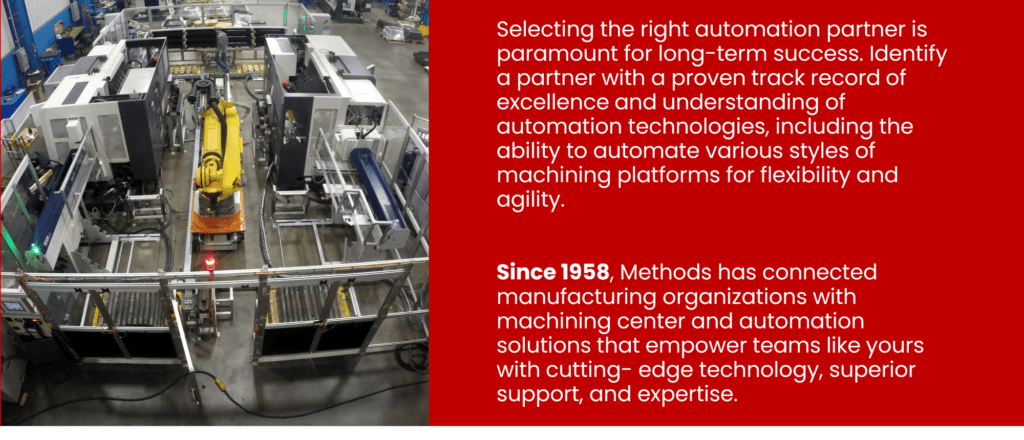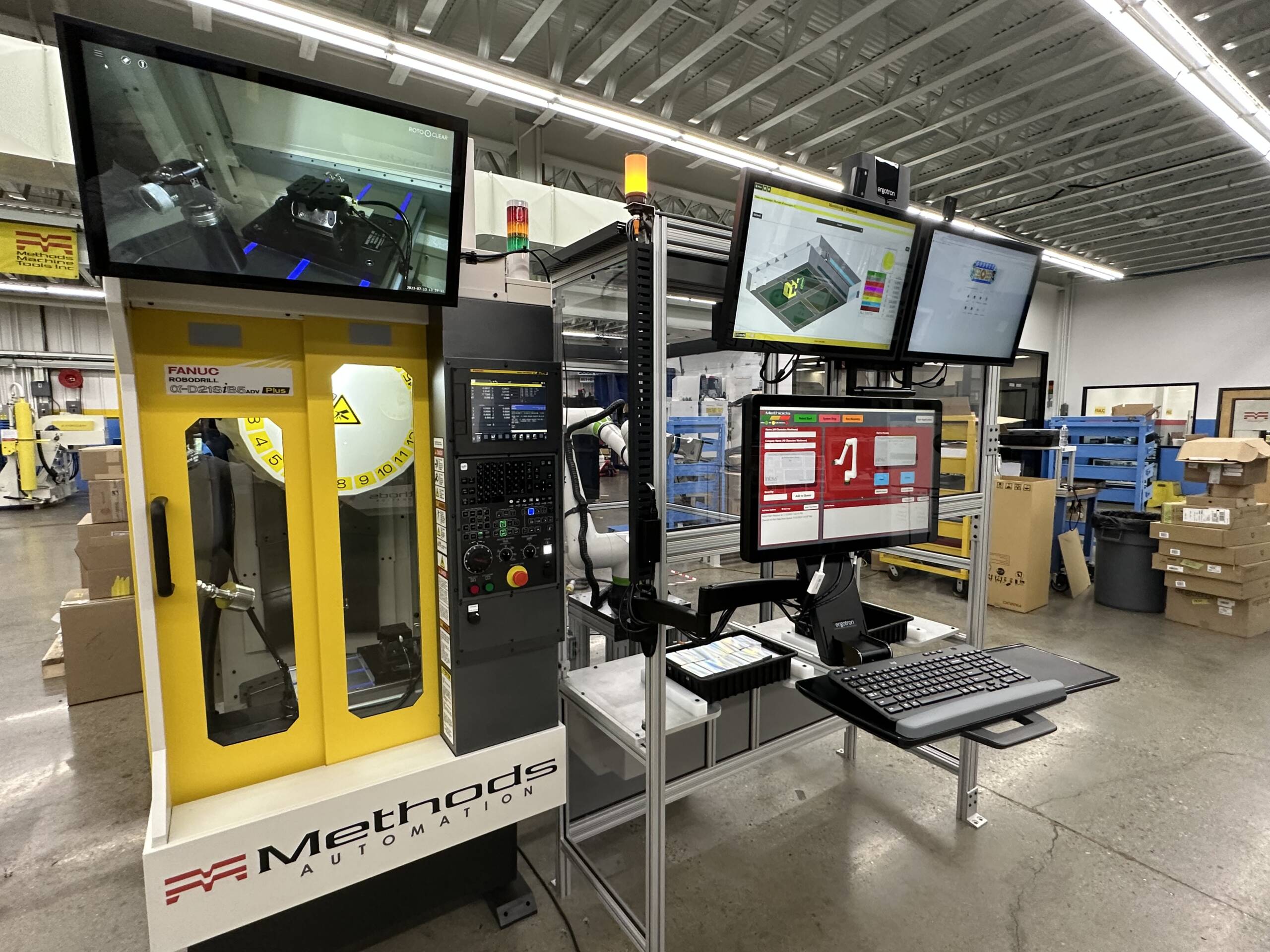Today’s manufacturers and job shops face an ongoing variety of pressures. Labor shortages, supply chain disruptions, regulatory requirements, customer demands for quality and timeliness, and the desire to provide exceptional service at scale all coalesce to one consistent theme for owners and decision makers. The need to adopt business strategies and solutions that help overcome these challenges and position the business for growth.
Automation stands out as a consistent, transformative route to address these complexities. By strategically adopting automation technologies, businesses can optimize processes, enhance productivity, increase cash flow and future-proof their operations.
AUTOMATION: IMPERATIVE FOR SCALING YOUR BUSINESS
Labor shortages are creating pain at a time when manufacturers look to expand and scale their operations. The lack of skilled labor presents fewer available qualified workers, leaving businesses at risk to meet production and fulfillment demands. To effectively address these challenges, businesses must adopt strategic automation solutions that prioritize and optimize operational efficiency.
Automation serves a vital role in maintaining and improving the quality of business outputs. Automated processes inherently offer greater reliability and consistency, resulting in higher-quality outputs that more consistently meet or surpass customer expectations. In prioritizing quality through automation and embracing automated processes, businesses can improve and enhance their reputations and boost customer loyalty.
UNDERSTANDING MYTHS vs. REALITY
(Expand below to see the realities)
>> In understanding the truths around automation, businesses are better poised to make informed decisions about automation adoption to better drive growth.
ADDRESSING AUTOMATION CHALLENGES
 Lack of in-house skills
Lack of in-house skills
Many organizations struggle with a lack of personnel and the necessary skills and expertise to effectively implement and maintain automated systems.

Resistance to change
Some teams and team members may be resistant to automation due to fear of job displacement or hesitance toward new technologies.
 Cost constraints
Cost constraints
Organizations with limited financial resources might be skittish toward automation solutions due to potential upfront investment.
 Integration issues and perceived technical complexities
Integration issues and perceived technical complexities
Integrating new technology without a trusted partner can be complex and challenging, leading to delays and inefficiencies in the overall implementation process.
ASSESSING OPPORTUNITIES FOR AUTOMATION
Before considering any investment, leaders should strategically assess their current infrastructure and processes to identify areas prime for automation. Consider the following aspects when conducting this assessment:
![]() Execute a thorough audit of existing processes and procedures
Execute a thorough audit of existing processes and procedures
Identify gaps, inefficiencies, bottlenecks, and any areas where automation would add value.
![]() Identify workflows and tasks that are time-consuming
Identify workflows and tasks that are time-consuming
Target tasks that are prone to human error and/or are repetitive without requiring high technical skill or knowledge. These are candidates for automation.
![]() Evaluate the readiness of your existing infrastructure
Evaluate the readiness of your existing infrastructure
Identify hardware, software, and data management capabilities as these are all essential in support of automation initiatives.
PREPARING YOUR TEAM FOR AUTOMATION
To successfully integrate automation into their operations (and to drive continued innovation within an organization), businesses must prepare their workforce for the forthcoming changes. Explore these strategies for effectively preparing your teams:
1. Clearly communicate the reasons for bringing automation and its benefits to the business and the employees into the fold. Foster open dialogue throughout the process and be sure to address any concerns that arise.
2. Deliver thorough training programs to equip the employees with the knowledge necessary to maximize the new automated solutions. Trainings should address technical aspects of the upgraded systems and highlight the importance of adaptability.
3. Foster a culture of strategic thinking, collaboration, and innovation by encouraging employees to participate in the identification of automation and process optimization opportunities. Create a supportive environment where employees feel empowered and heard.
4. Offer ongoing support to employees as they navigate automation. This may include additional trainings or even mentorship programs that help facilitate continuous improvement.


Case Study
Aerospace Shop Triples Efficiency with Methods Automation

The Methods Approach to Automation
Turnkey Automation Cell with Nakamura-Tome
